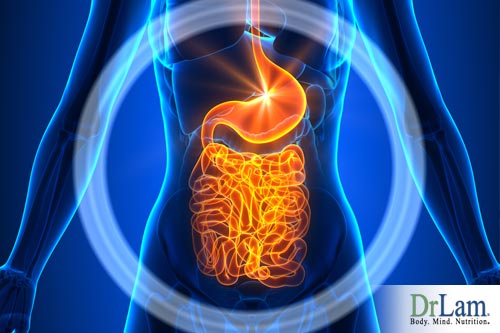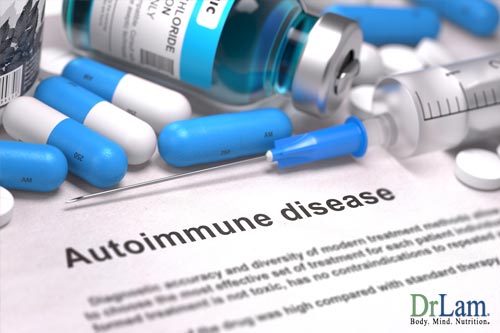 There’s been a trend towards adopting an anti-inflammatory diet, and this is with good reason.
There’s been a trend towards adopting an anti-inflammatory diet, and this is with good reason.
More and more, inflammation is appearing as the root cause of many health complications, including obesity. It creates the kind of environment that weakens the body’s defenses while triggering or worsening illnesses. Even hormonal health and cardiovascular health are linked to inflammation.
However, not all inflammation is created equal. Acute inflammation is actually a very important mechanism to protect your body from harmful attacks, such as bacterial or viral infections. It is only when this mechanism is constantly triggered that you then become susceptible to chronic disease.
Symptoms of acute inflammation that don’t go away are a sign of chronic inflammation. These include swelling, redness, stiffness, and joint pain, as well as agitation and moodiness. Also, some symptoms of chronic inflammation are abdominal pain, pain of unknown origin, depression, and fatigue.
If you find yourself experiencing these symptoms, it’s time to go to a doctor and get tested for inflammatory markers such as C-reactive protein (CRP) and homocysteine levels.
The CRP blood test will measure how much C-reactive protein is in your system, which indicates the level of inflammation present due to infections or illnesses related to inflammation, like lupus and cancer. It does not show where the location of the inflammation is, however.
Although high homocysteine levels are traditionally used as markers of cardiovascular risk, they are now also being used as markers of inflammation. Homocysteine is an amino acid commonly found in the blood. It is usually associated with low levels of vitamins B6, B12, and folate, as well as with meat consumption.
In addressing these issues, it’s important to find a doctor who will investigate these markers and help you take a more holistic approach to the root cause of your inflammation, rather than just addressing symptoms.
Frequently, that root cause is in the gut.
Ancient medical systems didn’t focus on the gut as the epicenter of overall health without cause. Practitioners of Traditional Chinese Medicine and Ayurvedic Medicine understood the link between inflammation and gut health, and how these two affect every other system in the body.
In fact, if a person begins exhibiting signs of gastrointestinal problems, these practitioners would predict that sooner or later in this person’s life, a disease will develop.
Modern medicine is beginning to catch up with this. Recently, much more research has focused on the gut’s microbiome and the way it affects inflammation and overall health.
This also drastically affects the health care system. While cancer costs $57 billion a year, autoimmune diseases cost around $100 billion. Autoimmune disease is an eventuality when chronic inflammation is left unaddressed.
The inflammation-hormone relationship is a key point to understand as well, especially regarding women’s health, but also with regards to adrenal fatigue and the stress-gut-inflammation link. However, you can begin taking control of these issues through an anti-inflammatory diet.
 Inflammation almost always lies at the root of autoimmunity, which occurs when the immune system attacks healthy cells, mistaking them for foreign bodies. No matter what type of autoimmune condition is present, inflammation usually is also.
Inflammation almost always lies at the root of autoimmunity, which occurs when the immune system attacks healthy cells, mistaking them for foreign bodies. No matter what type of autoimmune condition is present, inflammation usually is also.
The rise in autoimmunity parallels the rise in obesity, and both are growing worldwide. 35% of global populations are obese, with half of Americans over 50 years of age considered clinically obese. The National Institutes of Health indicates 23 million Americans affected by autoimmune disease, while other sources enumerate 50 million Americans.
So what is the link between obesity, inflammation, hormones, and autoimmunity?
Obesity creates an environment in the body that can be described as “pro-inflammatory”. More and more, research is also showing obesity as a disease of inflammation.
Up until recently, adipose tissue, or fat, was thought to serve only as storage for triacylglycerols when there was an excess of energy. That way it could release fatty acids when there was a need for energy in the system. But now, there’s evidence that it has a more active role in endocrine and metabolic functions.
Adipose tissue can either be subcutaneous (underneath the skin) or visceral (between the organs). It secretes adipokines, which are a type of cytokine that circulate like hormones, signaling information between different organs.
Cytokines are proteins, peptides, and glycoproteins that help cells communicate in an immune response. They stimulate cells to move to areas of inflammation and injury. Inflammatory cytokines are what can induce the process of autoimmunity. For example, with asthma, the cytokines trigger the immune system to attack the airways.
Different types of adipokines help regulate glucose and insulin, and in turn affect leptin and insulin levels, which are indicative of the presence or absence of inflammation.
Adipokines, such as leptin and adiponectin, are involved in pro and anti-inflammatory responses and insulin resistance. Interestingly, with leptin for example, a pro-inflammatory environment is created in the body both when leptin is too high and when it is too low.
Leptin is the hormone that signals satiation so you don’t keep eating constantly. Adiponectin is the hormone that helps regulate glucose and the breakdown of fatty acids.
If adipokine levels are dysregulated, this can be a marker for obesity, cardiovascular disease, and type 2 diabetes. With obesity, pro-inflammatory adipokines are a factor in triggering insulin resistance.
This means that the insulin resistance that comes with obesity is partly the result of the dysregulation of adipokines. This is why many practitioners now focus on inflammation in patients who come to them with weight problems, and propose the patient adopts an anti-inflammatory diet that helps with weight loss and inflammation.
 With the knowledge that many autoimmune conditions begin with inflammation, it is possible to dig a little deeper and see how the gut plays the main part. The gut’s microbiome is the mediator of this process.
With the knowledge that many autoimmune conditions begin with inflammation, it is possible to dig a little deeper and see how the gut plays the main part. The gut’s microbiome is the mediator of this process.
The gut microbiome, sometimes called gut flora, is the community of microorganisms that live in the gut. They number around 100 million and thrive off of the anti-inflammatory diet.
There are ten times more bacteria in the gut, that can benefit from the anti-inflammatory diet, than in the rest of the human body, and the gut’s genome is one hundred times larger than the human microbiome. The gut’s microbiome contains up to 3 million unique genes coming from around 1000 different species of microorganisms.
This will most likely have many implications in the future, as epigenetics is a growing field. But even then, even if you have all of your genetic variations and data available, with a list of all of your Single Nucleotide Polymorphisms (SNPs, or “snips”), there is still the question of how these snips are activated. Once again, the answer is that this happens in the gut.
The microbiata of the gut has several important functions. First, the healthy bacteria present in the gut help resist invasion by harmful microbes. They also ferment non-digestible material passing through the gut, retrieving energy and nutrients that otherwise would have been wasted.
The relationship between gut flora and the immune system is another important factor.
The gut contains two thirds of the body’s immune tissues. In fact, one of its main functions is the inflammation response. The gastrointestinal (GI) tract’s immune system is composed of gut-associated lymphoid tissue (GALT), which is mainly concentrated in the small intestine.
The GALT has many types of immune cells, such as white blood cells, that attack any harmful invaders entering the GI tract. Gut flora, during the early stages of an infant’s development, begins to form a supportive relationship with the immune system.
The immune system, gut microbiata, and intestinal permeability are factors that, together, play a large part in gastrointestinal disorders and inflammation. When there is an imbalance in the gut flora, called dysbiosis, it opens up the door for many problems, including dysregulation of the immune system and the inflammation response.
Intestinal permeability is likely to follow dysbiosis, leaking particles into the bloodstream that shouldn’t be there. The immune system sees these particles as a threat and mounts an attack, causing inflammation.
This is why one of the first things to do when dealing with inflammation and autoimmune disease is to avoid or reverse dysbiosis. Starting an anti-inflammatory diet can support this.
A large part of women’s health is dependent on hormones. Imbalances in sex hormones such as estrogen and progesterone have been associated with the immune response and inflammation. An imbalance in even one hormone can have a cascading effect since these hormones are linked through the hormonal axes of the body.
 This is why chronic inflammation often accompanies key hormone transitions such adolescence, pregnancy, perimenopause, and menopause in particular. It has been shown that all four transitional phases can induce changes in genetics.
This is why chronic inflammation often accompanies key hormone transitions such adolescence, pregnancy, perimenopause, and menopause in particular. It has been shown that all four transitional phases can induce changes in genetics.
For example, a woman going through perimenopause, usually between the ages of 38 and 42, might develop an autoimmune disease. However, when she transitions to menopause, she may find herself with a different autoimmune condition. She may have started out with inflammatory bowel disease (IBD), but then when menopause begins, develop osteoarthritis. Both of these conditions have inflammation at the root, going back to the gut.
This is corroborated by the fact that women with digestive issues often have a more difficult time during menopause. Weight gain, osteoporosis, and acne can all be present at this stage.
Another phenomenon observed is that oftentimes after pregnancy, whether a few weeks or a year later, women will suddenly start to suffer from autoimmune conditions like lupus or rheumatoid arthritis.
What all of that means for you is that, if you’re having digestive issues or chronic inflammation, check for any issues with your hormones. Also, if you’re going through a hormonal transition, make sure you’re keeping an eye on inflammation and making gut health a priority.
Stay aware of any digestive symptoms you have, no matter how seemingly unrelated to your condition.
Some specific things to look out for are constipation, irritable bowel syndrome (IBS), and gastroesophageal reflux disease (GERD). These are early warning signs to consider, especially when thinking about taking hormones or getting help for a hormonal condition. Also, maintain an anti-inflammatory diet and supportive to hormonal health.
It can also help to pay special attention to where in your body fat is accumulating.
